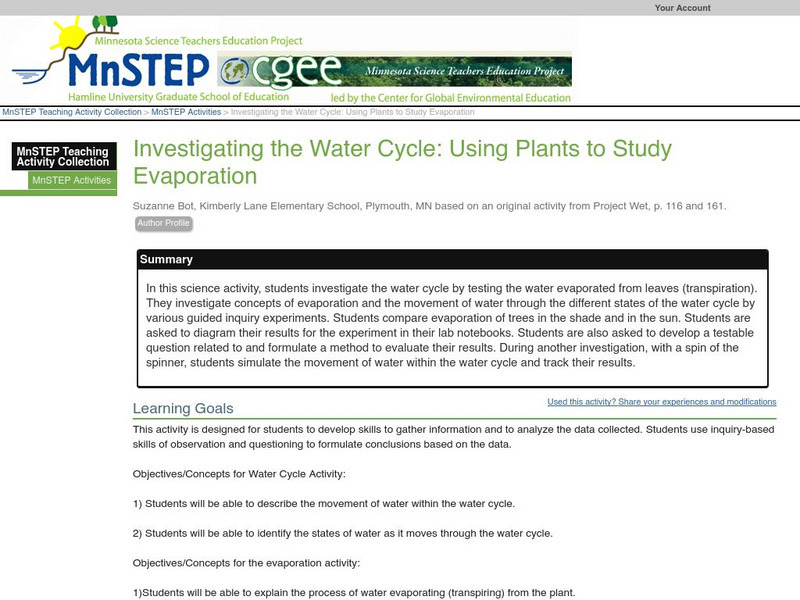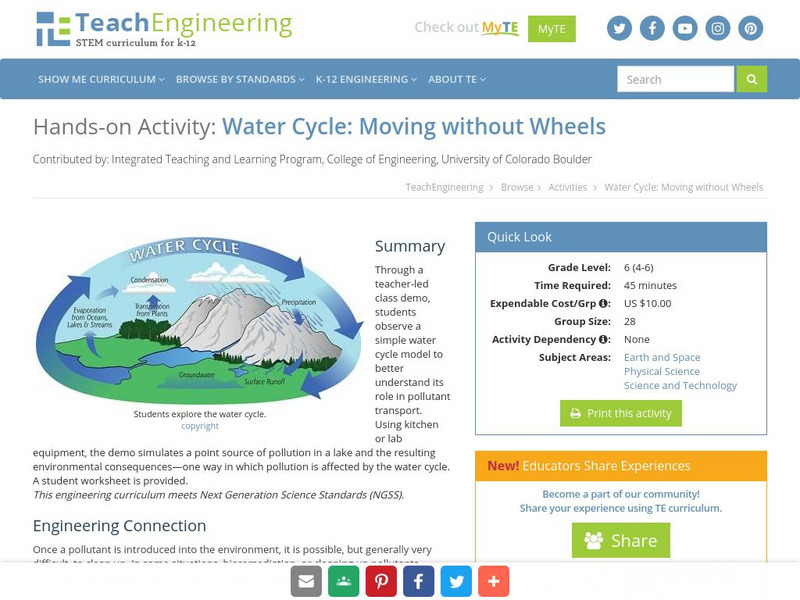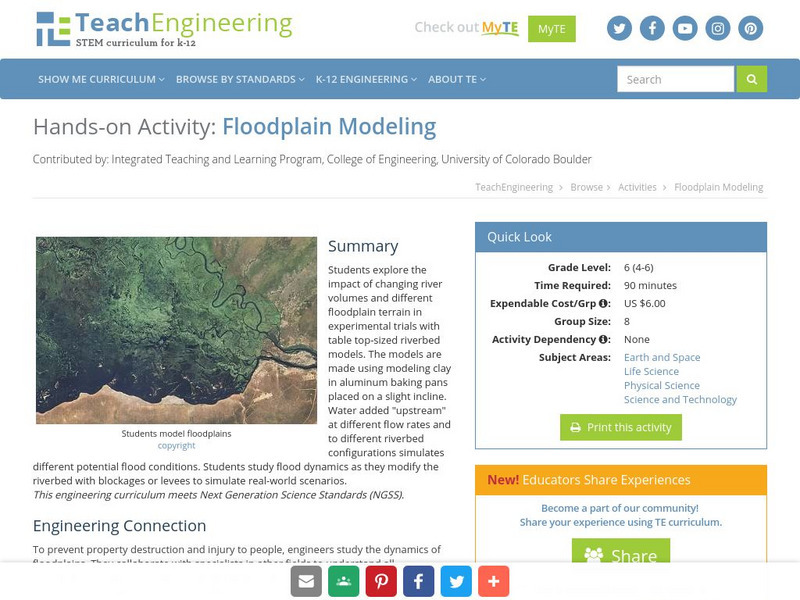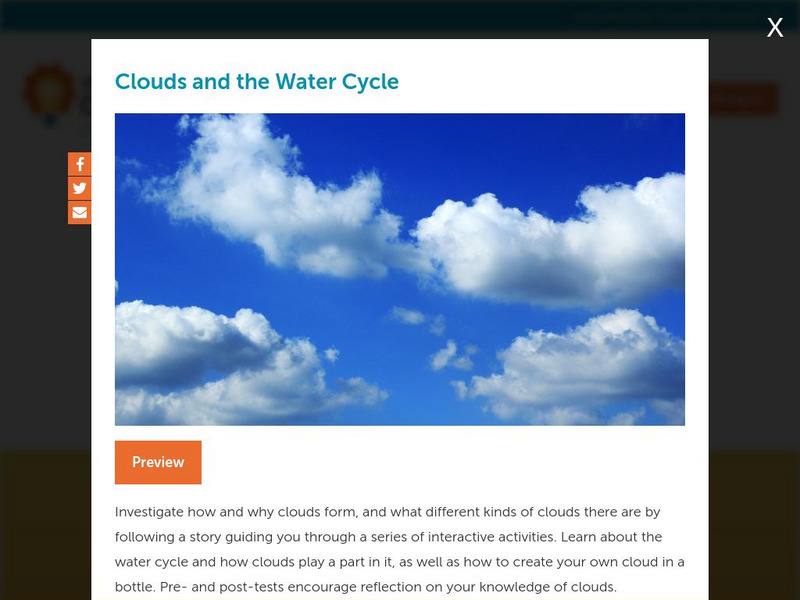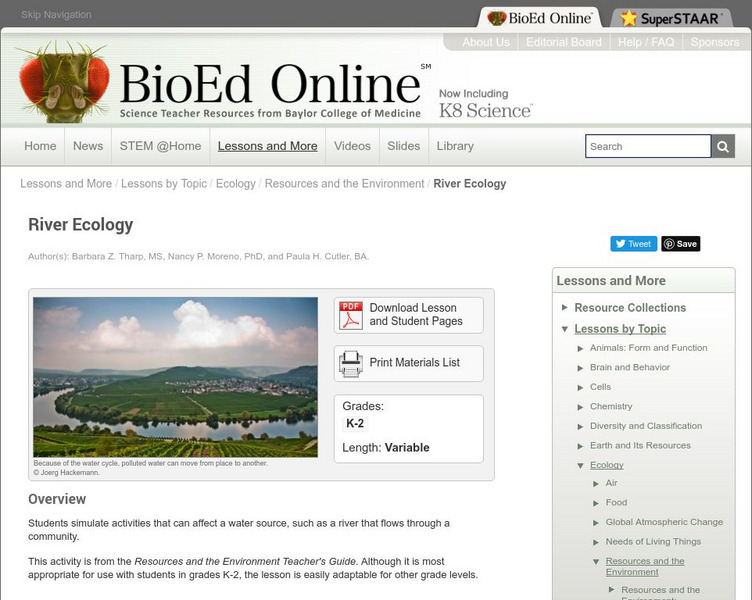Hi, what do you want to do?
Science Education Resource Center at Carleton College
Serc: Investigating the Water Cycle: Using Plants to Study Evaporation
In this science activity, students investigate the water cycle by testing the water evaporated from leaves (transpiration). They investigate concepts of evaporation and the movement of water through the different states of the water...
University Corporation for Atmospheric Research
Ucar: The Water Cycle
This site provides a comprehensive introduction to the water cycle. Students construct a model to simulate parts of the water cycle. Includes background information, links to standards, lesson plans, and assessment ideas.
BioEd Online
Bio Ed Online: The Water Cycle and Global Warming
In this lesson plan, students will trace the flow of water in the environment, investigate simulated effects of global temperature change on oceanic levels, evaluate changes within the water cycle, and explain several different...
PBS
Pbs Learning Media: Water Vapor Circulation on Earth
This simulation from the National Center for Atmospheric Research portrays annual patterns in water vapor and precipitation across the globe, illustrating general circulation patterns as well as seasonal and regional variation. [4:52]
TeachEngineering
Teach Engineering: Moving Without Wheels
In a class demonstration, students observe a simple water cycle model to better understand its role in pollutant transport. This activity shows one way in which pollution is affected by the water cycle; it simulates a point source of...
TeachEngineering
Teach Engineering: Floodplain Modeling
Students explore the impact of changing river volumes and different floodplain terrain in experimental trials with table top-sized riverbed models. The models are made using modeling clay in aluminum baking pans placed on a slight...
Concord Consortium
Concord Consortium: Stem Resources: Beginning Clouds Unit
Explore how clouds are formed with the computer-based model in these interactive activities. Also learn about clouds part in the water cycle. Activity includes pre- and post-tests which can be saved and graded by the teacher.
BioEd Online
Bio Ed Online: River Ecology
In this lesson plan learners are required to simulate activities that can affect a water source, such a river as it flows from one place to another within a community.
Science Education Resource Center at Carleton College
Serc: Mn Step: Watersheds Urban and Rural
For this activity students build models of two types of watersheds, one urban and one rural. They will then simulate rain or the water cycle and observe what happens to the 'soil.' This activity leads to discussions about the water...
Science Education Resource Center at Carleton College
Serc: Lab 2: What's a Watershed?
Students build a physical model to simulate watershed features, then use Google Earth software to tie the model to a real place. By exploring several layers of map-based images and data, students learn the complexity of a watershed and...
TeachEngineering
Teach Engineering: Air Pollution
Students are introduced to the concept of air quality by investigating the composition, properties, atmospheric layers and everyday importance of air. They explore the sources and effects of visible and invisible air pollution. By...
TeachEngineering
Teach Engineering: Environment
Through 10 lessons and more than 20 hands-on activities, students are introduced to the concept of an environment and the many interactions within it. As they learn about natural and human-made environments, as well as renewable and...
OpenSciEd
Open Sci Ed: Net Logo: Chloroplasts and Food Model
The simulation shows the relationship between the inputs and outputs in the chloroplasts of plant, that can help explain how they convert water and carbon dioxide to glucose and water with the help of energy absorbed from light.





